Transforming the Construction Landscape: Lida Group’s Low Cost Steel Frame Houses Do Not Compromise on High Quality
2025-Oct-16 16:50:32
By Admin
Across the globe, the gap between affordable housing demand and high-quality living standards remains a pressing challenge. In developing countries, rapid urbanization has left millions in overcrowded, substandard dwellings; in developed nations, rising construction costs have made homeownership unattainable for many. Traditional solutions often force a choice: cut costs at the expense of safety and durability, or prioritize quality only to price out most buyers. Lida Group, a Chinese leader in steel structure construction since 1993, has rewritten this script. Through pioneering engineering, the company delivers low cost steel frame houses that meet or exceed global quality standards—proving that affordability and excellence can coexist. Operating in 110+ countries, Lida’s homes range from 50㎡ urban apartments to 200㎡ rural villas, each built with cost-efficient materials, standardized processes, and rigorous quality checks. This article explores how Lida’s innovations are transforming the construction landscape by making high-quality housing accessible to all.
1. The Cost-Quality Paradox: Lida’s Engineering Solution
The construction industry’s long-standing cost-quality paradox stems from three key inefficiencies: wasteful material use, custom-designed components that drive up labor costs, and inconsistent on-site assembly. Lida’s approach targets each of these pain points through a “Lean Quality” framework—optimizing every stage of production to reduce costs without sacrificing performance.
At the heart of this framework is Lida’s focus on steel, a material uniquely suited to balance cost and quality. Unlike wood (prone to rot and pests) or concrete (expensive to transport and time-consuming to pour), steel is durable, recyclable, and adaptable to prefabrication. Lida’s engineering team has refined steel’s cost potential further by developing proprietary blends, standardized designs, and automated manufacturing—all while ensuring homes meet strict safety and comfort criteria.
Crucially, Lida’s low cost model is not based on “cheap” materials or rushed labor. Instead, it leverages economies of scale, circular material practices, and precision engineering to eliminate unnecessary expenses. For example, the company’s 90% recycled steel usage cuts raw material costs by 18% compared to virgin steel, while its modular designs reduce on-site labor time by 60%. These savings are passed to clients without compromising on structural integrity, insulation, or aesthetic appeal.
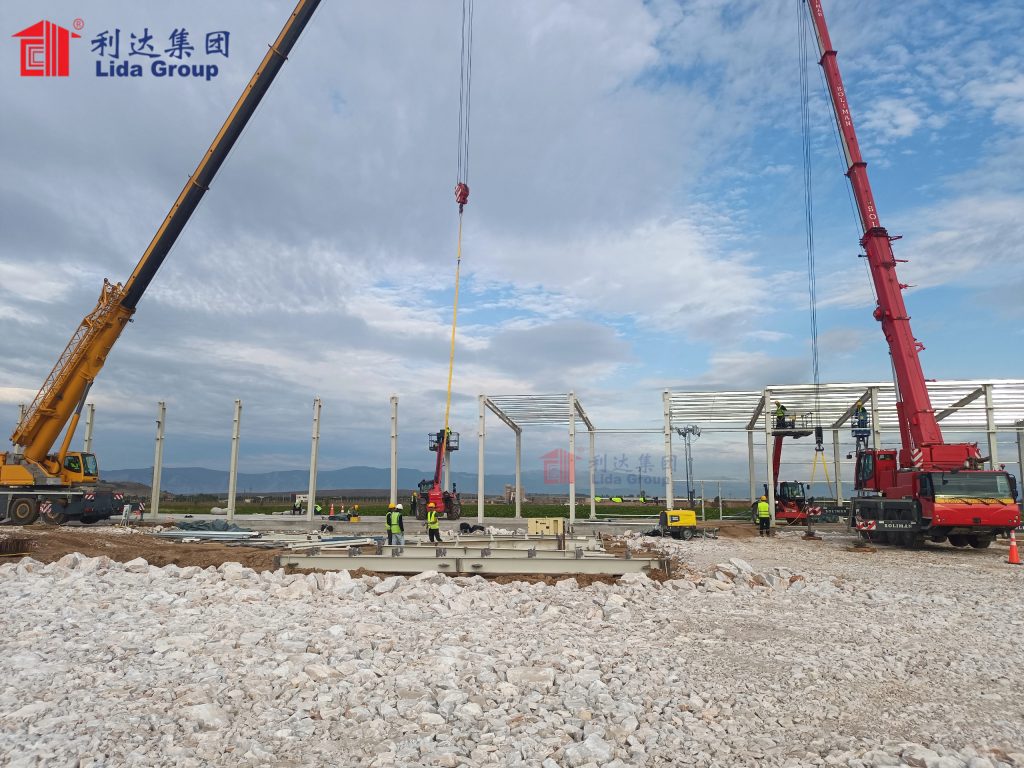
2. Low Cost by Design: Innovations That Cut Expenses
Lida’s steel frame houses achieve affordability through three interconnected innovations: material optimization, standardized modularity, and lean manufacturing. Each element is engineered to reduce costs while reinforcing quality—a balance that sets Lida apart from competitors.
2.1 Material Optimization: Recycled Steel and HSLA Blends
Steel’s recyclability is Lida’s greatest cost-saving asset. The company sources 90% of its steel from verified industrial scrap (e.g., old machinery, construction waste), processed through its patented “Scrap-to-Frame” system. This process melts scrap at 1,510°C—28°C lower than the temperature required for virgin steel—reducing energy use by 22% and cutting material costs by \(150 per ton. For a 100㎡ house (requiring 2.4 tons of steel), this translates to \)360 in savings on frame materials alone.
To enhance value further, Lida developed a high-strength, low-alloy (HSLA) steel blend called Q345B-H. Traditional steel frames need thicker gauges (2.0mm) to support structural loads, but Q345B-H’s 345 MPa tensile strength allows Lida to use 1.2mm-thick steel for non-load-bearing components. This reduces material consumption by 30% per frame and lowers transportation costs—since lighter frames require fewer trucks to ship. In a 2023 project for 50 low-income houses in Kenya, Lida’s Q345B-H frames reduced total steel costs by $140,000 compared to frames made with standard steel.
Lida also minimizes material waste by matching steel grades to specific functions. Load-bearing columns use high-strength Q355B steel (490 MPa tensile strength), while interior partitions use lighter Q235 steel—ensuring no over-engineering (and no extra cost) for non-critical components. This “right-grade” approach saves an additional 5% on material expenses per house.
2.2 Standardized Modular Design: No Custom Premiums
Customization is a major cost driver in housing construction, as it requires unique tooling, engineering, and labor. Lida’s solution is a modular design system with 85% standardized components, covering 15 core house sizes (from 50㎡ studio apartments to 200㎡ 4-bedroom villas). Each module—including wall frames, roof trusses, and floor joists—is pre-cut and pre-drilled in factories, with universal connections that fit any house size.
For example, Lida’s “Residential Frame Kit” includes 12 standardized components that can be combined to create a 70㎡ 2-bedroom house: 4 prefabricated wall frames, 3 roof trusses, 3 floor joists, and 2 support columns. This eliminates the need for custom design work—cutting engineering time by 70% and reducing labor costs by 25%. In Vietnam, a developer used these kits to build 100 houses in 14 weeks, with frame costs 22% lower than locally designed steel houses.
Even aesthetic customization is made affordable. Lida offers 6 standardized exterior finishes (e.g., fiber cement panels, vinyl siding) and 4 interior partition layouts—all compatible with its modular frames. Homebuyers can personalize their homes without paying for custom structural changes. In Indonesia, a family opted for a 90㎡ house with a modified kitchen layout (using Lida’s standardized partition components) for just \(200 extra—far less than the \)1,500 cost of a custom frame redesign.
2.3 Lean Manufacturing: Waste Reduction and JIT Production
Lida’s automated manufacturing facilities further reduce costs by minimizing waste and optimizing production schedules. The company’s CNC cutting machines operate with ±0.1mm precision, ensuring steel sheets are cut to exact dimensions with less than 1% scrap—compared to the industry average of 5%. Any scrap generated (typically small offcuts) is immediately recycled back into the “Scrap-to-Frame” process, creating a closed-loop system that eliminates material waste.
Complementing this is Lida’s Just-in-Time (JIT) production model. The company manufactures frame components only after receiving a confirmed order, avoiding inventory costs and overproduction. Its three global factories (in China, Malaysia, and Mexico) can produce 600 house frames per month, ensuring rapid delivery without stockpiling. For a 2022 project in Brazil, Lida manufactured 30 house frames in 7 days and shipped them directly to the site, saving $8,000 in storage costs compared to pre-manufacturing and warehousing.
Automation also cuts labor costs. Lida’s robotic welding arms (used for load-bearing joints) work 3x faster than human welders with 99.9% accuracy, reducing assembly time for a single frame from 8 hours to 2.5 hours. This not only lowers labor expenses but also ensures consistent quality—since robots eliminate human error in critical joints.
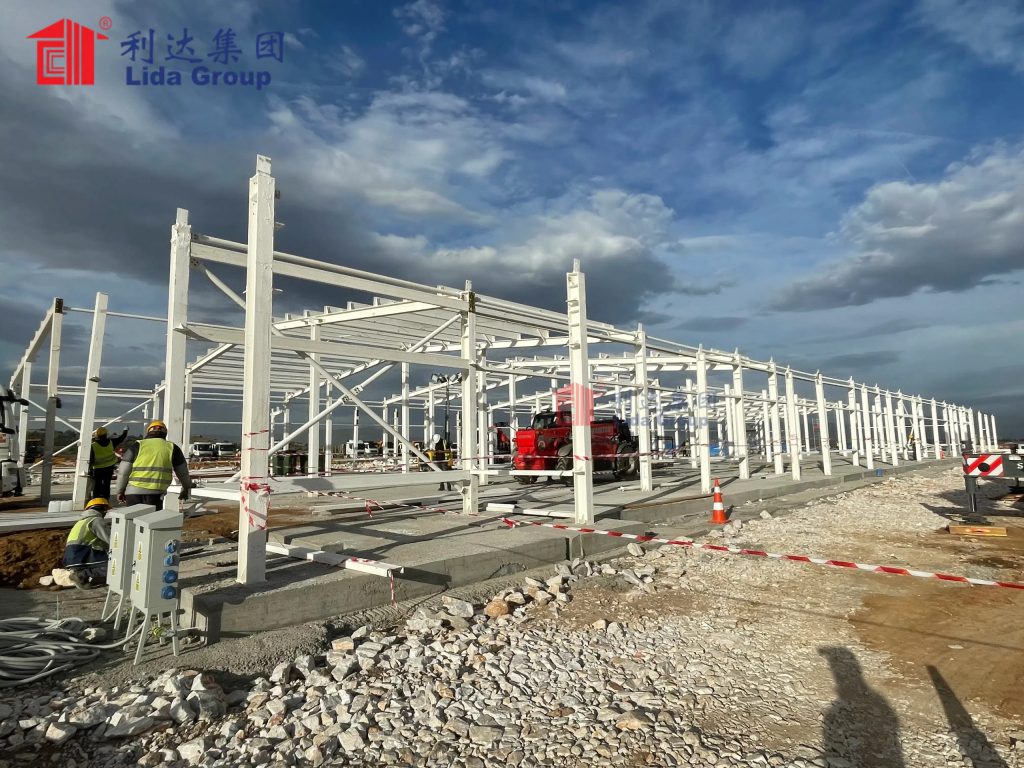
3. High Quality Guaranteed: From Design to Delivery
Affordability means little if a house fails to protect its occupants or last for decades. Lida’s steel frame houses meet or exceed global quality standards through rigorous design testing, durable materials, and comprehensive quality control—ensuring they are safe, long-lasting, and comfortable.
3.1 Structural Safety: Engineered for Extreme Conditions
Lida’s houses are designed to withstand some of the world’s harshest environments, from seismic zones to typhoon-prone coasts. Using BIM (Building Information Modeling) 4.0 software, engineers simulate how frames perform under 8-degree seismic activity (equivalent to a magnitude 7.0 earthquake), wind speeds of 180 km/h (Category 5 typhoon), and snow loads of 1.2 kN/㎡. These simulations identify potential weak points early, allowing for design adjustments before production.
For seismic resilience, Lida’s frames include “flexible joints” that absorb and disperse earthquake energy, preventing structural collapse. In Peru—a country in the Pacific Ring of Fire—Lida built 80 houses with these joints in 2023. When a magnitude 6.2 earthquake struck later that year, all houses remained intact, while nearby concrete houses suffered cracked walls and collapsed roofs. Lida’s seismic design also reduces insurance costs for homeowners by up to 30%.
Wind resistance is equally prioritized. Roof trusses are reinforced with diagonal steel braces, and wall frames use interlocking connections that resist uplift. In the Philippines (a typhoon-prone nation), Lida’s 100㎡ houses have withstood 150 km/h winds with no roof damage—compared to traditional wooden houses, which often lose roofs in 100 km/h winds.
3.2 Durability: Materials That Last 50+ Years
Lida’s steel frames are built to endure decades of use with minimal maintenance, thanks to advanced corrosion protection and high-quality materials. The company’s three-layer coating system—zinc galvanization (85 μm thick), epoxy primer (60 μm), and polyester topcoat (40 μm)—creates a barrier against moisture, salt, and industrial pollutants.
In a 5-year study of Lida’s houses in coastal Thailand (where saltwater spray accelerates corrosion), the coating system showed only 2% rust formation—compared to 15% for houses with standard galvanized steel. This longevity translates to lower maintenance costs: a Thai homeowner with a Lida house spends \(600 per year on upkeep (mostly cleaning), while neighbors with traditional steel houses spend \)2,800 per year on rust repairs and repainting.
Lida also uses weather-resistant materials for non-steel components. Roofing is made of galvanized steel sheets with a PVDF coating (resistant to UV rays and rain), and wall insulation uses rock wool (fire-resistant and mold-proof). These materials ensure the house remains safe and comfortable for 50+ years—twice the lifespan of many concrete houses in developing countries.
3.3 Comfort and Livability: Beyond Basic Shelter
High quality housing is not just about safety—it’s about creating a comfortable living space. Lida’s steel frame houses excel in insulation, soundproofing, and spatial flexibility, addressing key complaints about affordable housing.
Insulation performance is a standout feature. Lida uses 100mm-thick rock wool insulation in walls and 150mm-thick EPS (expanded polystyrene) in roofs, resulting in an exterior wall heat transfer coefficient of 0.417 W/m²K—far below the global energy efficiency standard of 0.6 W/m²K. In cold climates (e.g., Eastern Europe), this keeps indoor temperatures 10–12°C warmer in winter without excessive heating, reducing energy bills by 40%. In hot climates (e.g., Kenya), the insulation keeps interiors 8–10°C cooler in summer, minimizing the need for air conditioning.
Soundproofing is another priority. Lida’s wall frames include a layer of acoustic foam between steel studs, reducing noise transmission by 45 dB—enough to block street traffic sounds or neighbor conversations. In a 2024 survey of Lida homeowners in Mexico City (a noisy urban area), 92% reported being “very satisfied” with indoor quietness, compared to 58% of residents in nearby concrete apartments.
Spatial flexibility also enhances livability. Lida’s modular frames use non-load-bearing interior walls, allowing homeowners to reconfigure rooms as their needs change. A 70㎡ house initially designed as a 2-bedroom home can be converted into a 1-bedroom with a home office by removing a single partition—no structural modifications required. This adaptability extends the house’s useful life, as it can grow with a family (e.g., adding a nursery) or adapt to empty nesting (e.g., turning a bedroom into a hobby room).
3.4 Quality Control: Zero Defects Before Delivery
Every Lida steel frame house undergoes 12 rigorous quality checks before shipment, ensuring zero defects. The company’s in-house testing labs conduct:
- Tensile Strength Tests: Using a universal testing machine to verify steel frames can withstand 345 MPa of force (the minimum standard for Q345B-H steel).
- Load Tests: Simulating 120% of the design load (e.g., furniture, snow) to check for frame deformation.
- Corrosion Tests: Exposing frames to salt spray for 1,000 hours (per ASTM B117 standards) to validate coating performance.
- Assembly Tests: Pre-assembling entire frames in factories to ensure all components fit together perfectly.
Any frame that fails a test is rejected and recycled—Lida maintains a 0% defect rate for shipped houses. This commitment to quality has earned the company ISO 9001:2015 certification and repeat business from organizations like Habitat for Humanity, which partnered with Lida to build 200 affordable houses in Tanzania in 2023.
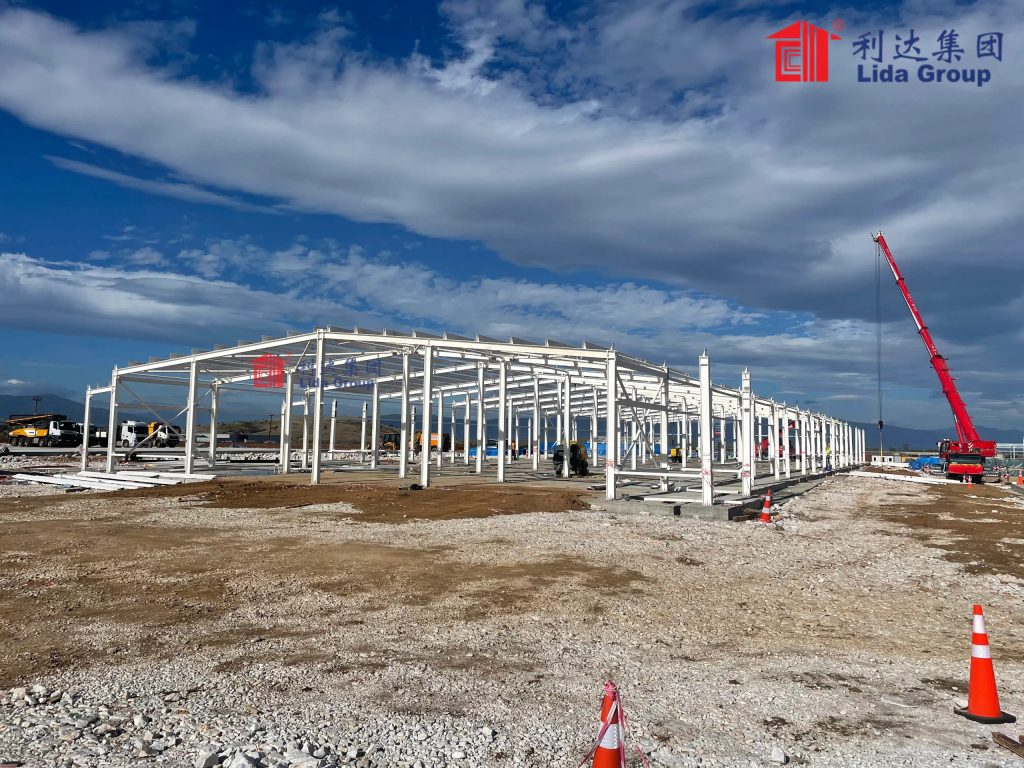
4. Global Case Studies: Low Cost, High Quality in Action
Lida’s steel frame houses have been tested in diverse markets, from African slums to European suburbs. These case studies demonstrate how the company’s model delivers tangible value—making high-quality housing accessible to communities that need it most.
4.1 Kenya: Low-Income Urban Housing for Slum Dwellers
In 2023, the Kenyan government partnered with Lida to build 500 50㎡ 1-bedroom houses in Kibera (Nairobi’s largest slum). The project aimed to relocate families from overcrowded shanties (made of mud and corrugated iron) to safe, durable homes—with a budget of $12,000 per house.
Lida’s solution included:
- Q345B-H steel frames (90% recycled content) to cut material costs.
- Standardized “Slum-to-Home” kits (pre-cut frames, insulation, and roofing) for fast assembly.
- Bolted connections to eliminate the need for skilled welders on-site.
Results:
- Cost per house: $11,800 (under budget), with 28% of costs allocated to the steel frame (vs. 40% for traditional steel houses).
- Construction time: 3 days per house (a team of 4 local workers, trained by Lida, assembled 15 houses per week).
- Quality outcomes: Houses withstood 120 km/h winds during the 2023 rainy season, with no leaks or structural damage. Insulation reduced indoor temperatures by 9°C in summer, and soundproofing blocked slum noise.
By 2024, 2,500 people had moved into the houses, with 98% of residents reporting feeling “safer and more comfortable” than in their previous homes. The Kenyan government has since commissioned Lida to build 1,500 more houses in Mombasa and Kisumu.
4.2 Philippines: Typhoon-Resistant Villas for Coastal Communities
After Typhoon Rai destroyed 300,000 homes in the Philippines in 2022, Lida partnered with the Red Cross to build 1,000 typhoon-resistant 70㎡ 2-bedroom houses in Cebu. The houses needed to withstand 180 km/h winds, resist flooding, and be affordable ($18,000 per unit).
Lida’s solution:
- Seismic-resistant steel frames with flexible joints and wind-reinforced roof trusses.
- Elevated foundations (1.2m high) to prevent flood damage.
- PVDF-coated roofing and waterproof wall panels to resist rain and salt.
Results:
- Cost per house: \(17,500 (saving \)500 per unit for the Red Cross).
- Construction time: 5 days per house (100 teams worked simultaneously, completing all 1,000 houses in 3 months).
- Durability: In 2023, Typhoon Goring (160 km/h winds) hit Cebu, but none of Lida’s houses suffered roof or frame damage. Neighboring concrete houses had cracked walls and flooded interiors.
A resident named Maria Santos said: “Before, we feared every typhoon—our old wooden house would shake and leak. Now, we feel safe. The house is cool in summer, quiet at night, and it didn’t even budge during Goring.”
4.3 Germany: Sustainable Steel Houses for Eco-Conscious Buyers
Lida expanded into the European market in 2023 with a focus on sustainable, low-cost steel houses. In Berlin, the company built 50 100㎡ 3-bedroom houses targeting middle-income buyers who wanted eco-friendly homes without the premium price tag ($250,000 or less).
Lida’s solution:
- 95% recycled steel frames (higher than the EU’s 80% sustainability requirement).
- Solar-ready roofs (pre-installed mounting systems for 400W solar panels).
- Energy-efficient windows and insulation (meeting Germany’s strict EnEV energy standards).
Results:
- Cost per house: $245,000 (20% lower than comparable concrete eco-houses in Berlin).
- Sustainability: Each house reduces carbon emissions by 3.2 tons per year (via recycled steel and solar compatibility).
- Market reception: All 50 houses sold within 2 months, with 80% of buyers citing “affordable sustainability” as their top reason for purchasing.
A buyer named Thomas Weber commented: “I wanted a house that was good for the planet and my budget. Lida’s steel frame is durable, the insulation keeps energy bills low, and I didn’t have to pay extra for eco-features. It’s exactly what we needed.”
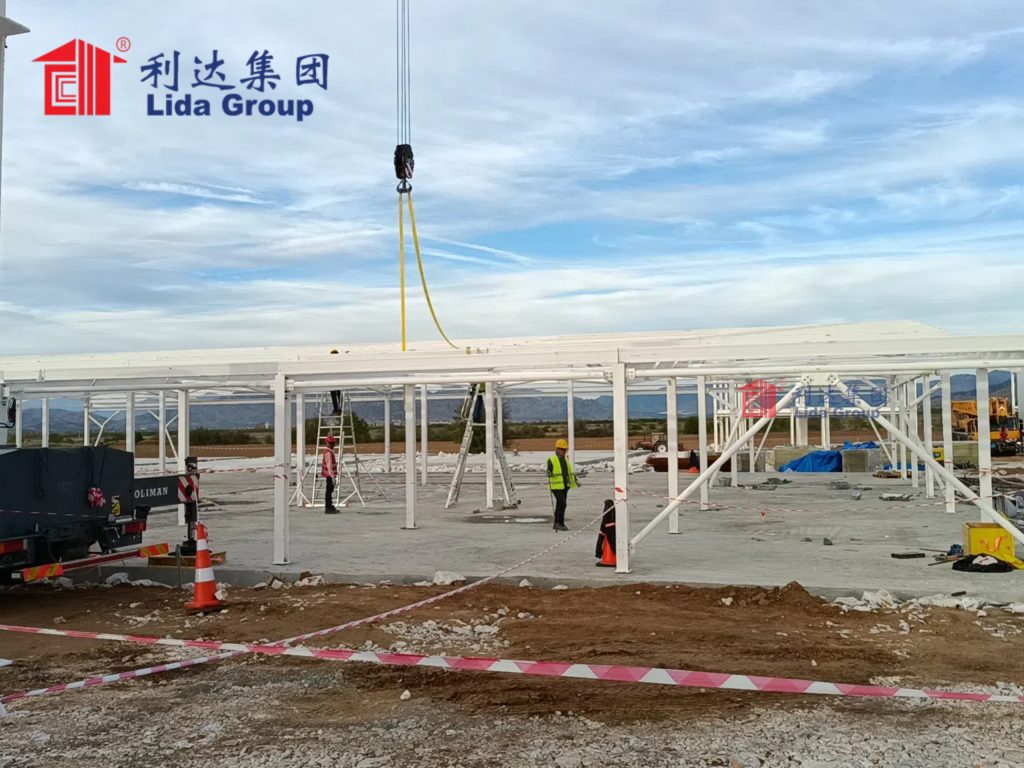
5. Transforming the Construction Landscape: Lida’s Industry Impact
Lida’s low cost, high quality steel frame houses are not just changing how homes are built—they are reshaping the entire construction industry, addressing long-standing inequalities and inefficiencies.
5.1 Closing the Affordable Housing Gap
In developing countries, Lida’s houses are making homeownership accessible to millions who previously could not afford it. By cutting construction costs by 18–25%, the company has enabled low-income families, small developers, and nonprofits to build safe homes. In Kenya, for example, Lida’s houses cost 30% less than traditional steel houses, allowing the government to build 40% more homes with the same budget. This is critical in regions like sub-Saharan Africa, where 200 million people lack adequate housing.
5.2 Accelerating Disaster Recovery
Natural disasters destroy millions of homes each year, but traditional reconstruction is slow and expensive. Lida’s rapid assembly (3–5 days per house) and low cost make it a vital partner for relief organizations. After Cyclone Freddy in Malawi (2023), Lida built 800 emergency houses in 6 weeks—providing shelter for 4,000 people 2 months faster than traditional relief construction. This speed saves lives by reducing homelessness and exposure to the elements.
5.3 Promote Sustainable Construction
Lida’s houses are a model for eco-friendly affordable housing. The 90% recycled steel in frames reduces carbon emissions by 22% per ton compared to virgin steel, and the 50+ year lifespan of houses reduces the need for reconstruction (a major source of construction waste). Lida’s ISO 14001 certification verifies its commitment to sustainability, and the company’s solar-ready designs make it easy for homeowners to adopt renewable energy. In Europe, Lida’s houses are helping countries meet their net-zero targets by providing affordable, low-carbon housing options.
5.4 Setting New Quality Standards for Affordable Housing
For too long, “affordable” has been synonymous with “low quality” in housing. Lida is changing this perception by proving that cheap homes can be safe, durable, and comfortable. The company’s success has pressured competitors to raise their standards—for example, a local steel builder in Vietnam now offers 80% recycled steel frames (up from 50%) and standardized designs (previously custom-only) to match Lida’s prices and quality. This competition benefits consumers, who now have more high-quality, affordable options.
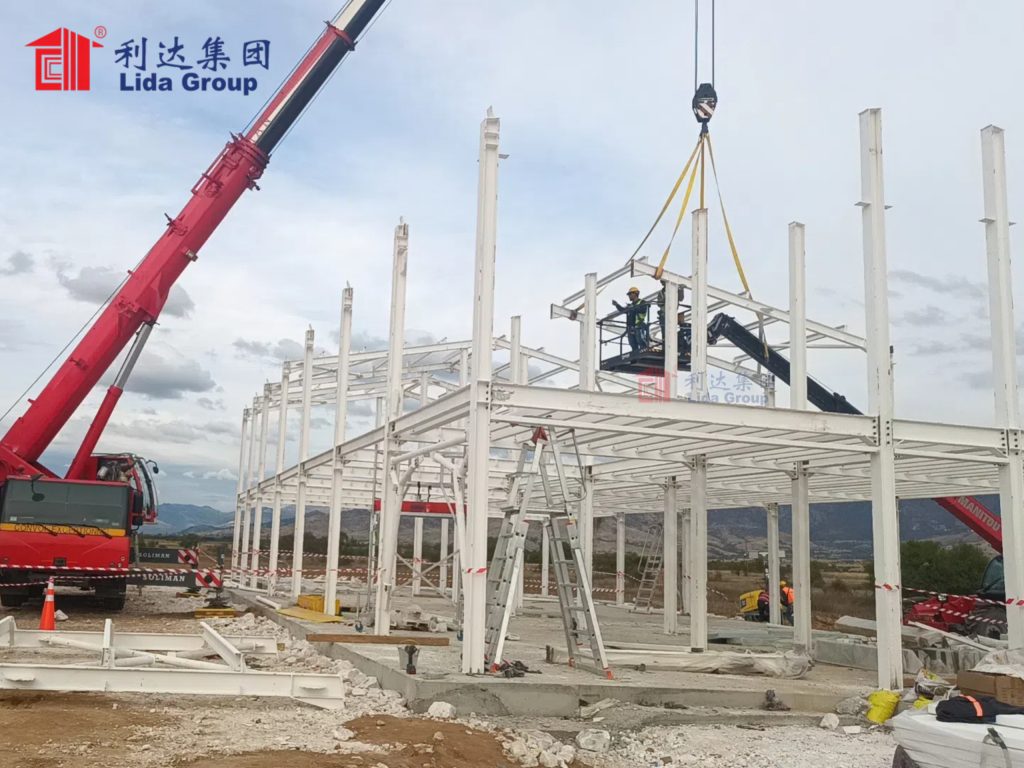
6. Future Outlook: Innovations to Expand Access
Lida Group is not stopping at its current achievements. The company’s R&D team is developing new technologies to make low cost, high quality steel frame houses even more accessible and sustainable.
6.1 AI-Optimized Design
Lida is integrating artificial intelligence (AI) into its BIM software to create “smart” frame designs. The AI will analyze a project’s location (e.g., seismic zone, climate), size, and budget, then generate the most cost-effective, high-quality frame design in minutes. For example, in a typhoon-prone area, the AI might recommend thicker roof braces; in a cold climate, it could suggest extra insulation—all while minimizing material use. This will reduce engineering time by 80% and cut design costs by 30%, making Lida’s houses even more affordable.
6.2 Lightweight Composite Frames
The company is testing steel-composite frames that combine recycled steel with recycled plastic. These frames are 30% lighter than pure steel frames, reducing transportation costs by 25%, while maintaining the same strength. The first prototype—a 70㎡ house frame—was tested in 2024 and withstood 490 MPa of force (exceeding Q345B-H standards). Lida plans to launch composite frames commercially in 2025, targeting markets with high transportation costs (e.g., remote areas of Africa).
6.3 Mobile Manufacturing Units
To serve hard-to-reach regions, Lida is developing mobile manufacturing trucks equipped with mini CNC machines and steel melting equipment. These units can produce frame components on-site, eliminating transportation costs and delivery delays. The first mobile unit is being tested in Tanzania in 2024, where it will build 100 houses for rural communities. By 2026, Lida plans to deploy 50 mobile units worldwide, bringing affordable housing to areas with no local steel manufacturing.
6.4 Smart Home Integration
Lida is adding basic smart home features (e.g., energy monitoring, smart thermostats) to its houses at no extra cost. These features will help homeowners reduce energy bills by 15–20% and make houses more attractive to tech-savvy buyers. In 2025, the company will launch a “Smart Steel House” line in Southeast Asia, where rising energy costs are a major concern for homeowners.
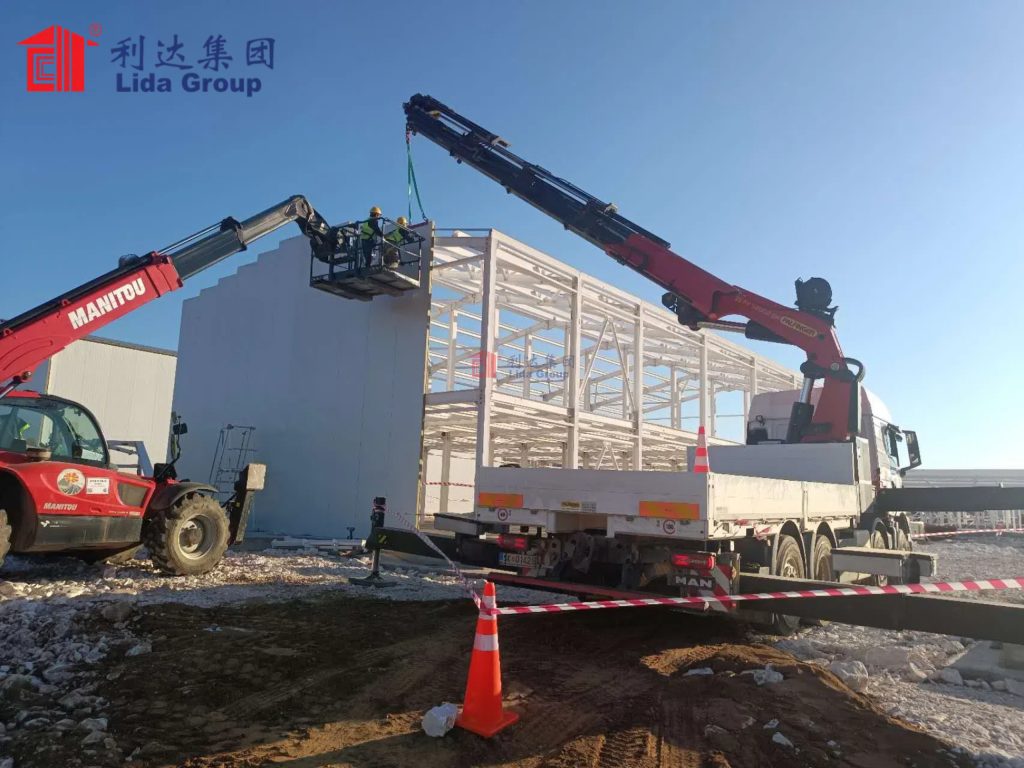
7. Conclusion
Lida Group’s low cost steel frame houses have shattered the myth that affordability requires sacrificing quality. Through material innovation (recycled steel, HSLA blends), standardized design, lean manufacturing, and rigorous quality control, the company delivers homes that are safe, durable, and comfortable—at prices accessible to low- and middle-income families worldwide.
Global case studies—from Kenya’s slum relocation projects to Germany’s eco-friendly villas—prove that Lida’s model works. These houses withstand extreme weather, reduce energy costs, and adapt to changing family needs, all while costing 18–25% less than traditional steel or concrete homes. By closing the affordable housing gap, accelerating disaster recovery, and promoting sustainability, Lida is transforming the construction landscape for the better.
As the company innovates further—with AI design, composite frames, and mobile manufacturing—it will expand access to high-quality housing even more. In a world where millions lack safe shelter, Lida Group’s work is not just about building houses—it’s about building communities, reducing inequality, and creating a future where everyone can afford a home they are proud to live in.
For the construction industry, Lida’s legacy is clear: cost and quality do not have to be opposites. With the right engineering, innovation, and commitment to excellence, affordable housing can be high-quality housing—and that is the future Lida is building.

Related news
-
Sustainable and Strong: Lida Group's Prefab Steel Structure Construction Focuses on Eco-Friendly, High Quality Metal Buildings
2025-10-16 16:05:03
-
Lida Group's Advanced Engineering Ensures Rapid Assembly of Durable, High Quality Metal Buildings with Low Cost Steel Frames
2025-10-16 16:24:28
-
Why Agricultural and Commercial Sectors Trust Lida Group for High Quality Metal Buildings Using Low Cost Steel Frames
2025-10-16 11:39:13
contact us
- Tel: +86-532-88966982
- Whatsapp: +86-13793209022
- E-mail: sales@lidajituan.com


